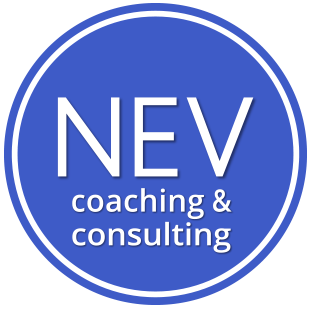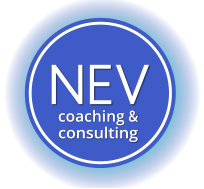
Are you hiring or looking to get hired? One of the most important topics in today’s professional world are the keys of a quality hiring process.
Whether you’re an organization looking to add great talent, or you’re a professional looking to get hired by an excellent organization, there are some fundamental practices you need to have in mind to make sure that this, often challenging process, is as fluid, professional and successful as possible.
If you don’t get your hiring process done right, so much more will go wrong going forward. Having the wrong person for the job, whether you are the person or the company, will only cause pain, struggle, and complications for all involved.
In this post we review some of the best practices hiring organizations can master to ensure a truly professional, efficient, and overall successful recruitment process.
And if you are a person looking for a job, DON’T MISS THIS! It is just as valid for you to understand their process so you can optimize your own job search strategies and results. Also, check out Part 2 here (all from a job seeker’s point of view).
1) Before hiring, have a clear, detailed job description – for a valid, valued position.
So many times we’ve seen companies trying to fit their positions around specific people instead of strategically analyzing what positions will get their company to their target success.
While this may seem admirable in the short term, it only gets super messy in the long term when said candidate that you have adapted to, stops delivering to your needs and objectives. And then everyone suffers.
So start by really getting clear on your organizational chart and then create very detailed and complete (written) job description for absolutely every position (hiring or not).
You should have two versions – a longer one for internal records that you will later give to your new employees upon hiring. And a second more summarized one for the public, with only key areas (1-pager) that will get the message across about the fundamentals of the company, position, and requirements (this is so as not to overwhelm potential hires).
A quality external job description will ensure that you attract the talent that will truly fit with the objectives of the given job.
2) For a successful hiring, post the jobs in ALL the resources where your ideal candidates are likely to look.
We often see organizations only using generic job platforms for their recruitment, simply because “that is what everyone does”. It’s not that you shouldn’t use these resources but if they are your only ones it can be extremely limited, if not downright mistaken, especially when positions are for higher levels or very specific sectors, specialties, circumstances, etc.
Take the time to write out a detailed profile of your ideal candidate, including how they function and where they are likely to congregate, network, or otherwise pay attention.
Consider getting support from a recruitment firm, specialty coaches/consultants, or the like to optimize your search.
Ideal candidates are smart and strategic, so you should be so as well in your process of finding them.
3) Pay attention to ALL of their communication with you.
The recruitment process is difficult for both sides. And there is so much volume and competition, often as well on both sides. Either way, there is certainly a lot of work. Not to mention that the process is essentially rushed, pressured, short, and utterly imperfect in really getting to know a potential candidate.
So it’s critical to look for all the clues that will allow you to better understand their potential and ways of being. But with an OPEN MIND and clear criteria.
Their initial and continuous communication with you, throughout the recruitment process, will often tell you more than their actual interview.
- Are they punctual in responding?
- Do they express themselves in a clear, mature, positive and courteous manner?
- Are they respectful and professional?
- Do they stand out with their language?
- Do they deliver well in an interview?
All this will give you important insights so that you, in the position of hiring, can ensure the best fit for everyone’s benefit.
4) To hire and whenever possible, use small activities/tests to get to know their fit ASAP.
As we live in a world with too much information, it can be difficult to understand how best to evaluate the fit of potential candidates.
But another quick and thorough way to do this, before you even get to the interview process, is to assign certain tests for applying candidates. Depending on your resources, this would be done before or after making your shortlist, but it will definitely affect it either way.
We love questionnaires, asking some important questions relevant to the position like
- “What value could you add immediately to the position?”
- “How do you best work in a team?”
- “What organizational environment nurtures your performance?”
- …and many others.
If there’s a language requirement, have them do a test or a short phone call.
There are countless creative ways to apply this that we use, as do others. And they allow you to screen people immediately, before you take more time on reviewing them, that might otherwise be wasted for you both.
5) For you hiring, get clear criteria about your shortlist.
A shortlist is simply 3-15 candidates (on average) that you determine to be the best possible fit for the hiring position, at this early stage in the hiring process.
This is critical so you can effectively continue in the recruitment, but you can’t effectively do this if you don’t know what you are looking for.
So this is one of the ways that point 1) becomes especially helpful. Identify the key areas that are absolutely critical for a successful candidate for this job and make sure you track that from the beginning, as you analyze everything from their CV, correspondence, social media/internet presence, tests, or initial interviews.
The more effective the list, the easier and more effective everything else will be towards hiring your ideal candidate.
6) Google and social media: essential to your hiring success.
This can feel like cheating, spying, etc. But the reality is that the grand majority of recruiters do it. We live, after all, in the digital age now, with all its pros and cons. And many potential hires will have a footprint in this virtual space.
Doing this in a manipulative, unethical, or downright illegal way is absolutely NOT ok. But a simple Google or LinkedIN search can either get you more insight into the potential value of the candidate or into the negative realities of their true and daily persona.
You will best judge how to handle this information but I suggest that if the candidate is already a good fit, give them a chance to explain in an interview, should confusing material come up. If it’s clearly downright negative, you will know your answer.
7) Train your people on how to interview effectively.
So many candidates, as well as organizations, have told us of their “interview horror stories”, where either a poorly prepared or even damaging interviewer discouraged a star candidate, or even complicated the recruitment overall.
The sad thing is that sometimes, they are the highest ranked people who, given their stress, rush and overall determination, fail to communicate well with potential candidates, causing more confusion and complication in their wake.
The worst, however, is when they are Human Resource professionals who are untrained, unprepared or entirely overstep their bounds with “imagined superiority”, in such a way that they entirely destroy a quality recruitment process.
No matter WHO is interviewing, at whatever level of the company, they should be properly trained and informed on the best practices for effective hiring.
I cannot stress enough how much this can be the beginning and end of attracting high level talent. And yet it is relatively easy to resolve.
8) Be clear about your recruitment process.
Potential candidates are usually just as busy as potential recruiters. They are often actively searching, applying, interviewing, strategizing, and preparing for next steps.
The mark of a good recruiter is to be a great professional in the process. As we expect of the applying candidates. Even if your job is deeply desired. And one key measure of this is being able to demonstrate and communicate a clear organization. With timeline and expectations from the beginning.
Simply ending an interview, at whatever part in the process, with a “this is what you can expect next” can be enough. If you feel it appropriate and there are special circumstances candidates should rightly know about, it’s useful to mention that as well. But just saying “thanks” and that’s that, can be disempowering. Especially if you are dealing with candidates who are valuable for the hiring position.
9) Before hiring: Never forget or overlook contacting their references.
This one is especially important. How many times hiring organizations have come back saying they have a good feeling about someone, so that’s enough.
IF you have a good feeling about someone, you should not be anxious about reaching out to their contacts. In fact, you SHOULD BE EXCITED.
They will likely tell you more true experiential insight. And why this person could really add value to your organization. And don’t forget that your potential hire has chosen these people, hopefully for a good reason.
Yet so many forgo this step. Out of laziness, rush, embarrassment or simply a lack of training for how to do it effectively. Even if they are “vanity references”, in other words, not truly valid or truthful, they will help you. You have the opportunity to get important insight from them if you know how to do this correctly.
There are many key questions to ask including:
- “What specific value did this person add to your company or team?”
- “Why have you chosen to recommend them?”
- “What can you tell me about them that I may not have learned so far?”
And many more, including your own specific questions.
You will always learn from this if they are quality recommendations. And if they are not, it will also potentially tell you something about the candidate.
10) After hiring, have a solid and organized Onboarding Process.
So here we are. You got the great hire, everyone is excited, they show up to their first week of work and then what? Confusion? Disorganization? Disconnection?
Your new hire is NEW. They are excited but hopeful and alone. They don’t know anyone. Also, they know something about the job (hopefully), but not your systems/tools, people, processes, ways of working, clients, etc.
The better you can get them supported in this initial phase, the faster and better they will deliver you results. It’s just that simple.
First and foremost, get them an official copy of their extended job description. Also the company policies and best practices, the recent quarterly report and any other important documentation. Do you have training programs? Summary sheets? Other agile ways of bringing them up to speed?
You can give them a buddy for the first week and incentivize the buddy to be especially helpful to them. You can bring them immediately on a client experience, event, or the like.
But above all make sure they have regular face-to-face communication with their reporting manager and key peers. This will be absolutely fundamental to their success, and the success of their position.
These are some starters and there are many more.
We coach and consult in this area. Never hesitate to reach out to us with your comments and inquiries. We always give a free consultation to anyone who asks for it.


